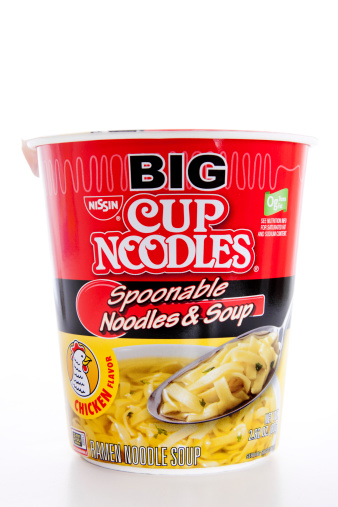Editor’s note: Tom Ewing is director of communications at marketing research firm System1 Group, London. This is an edited version of a post that originally appeared here under the title, “Instant innovation: Just add fluency.”
 This summer I was lucky enough to travel to Singapore for the first time. I asked my 10-year-old son if there was anything he wanted me to bring back for him from Asia. He answer: ramen. One cheap packet of supermarket noodles was as alluring to him as any video game collectable.
This summer I was lucky enough to travel to Singapore for the first time. I asked my 10-year-old son if there was anything he wanted me to bring back for him from Asia. He answer: ramen. One cheap packet of supermarket noodles was as alluring to him as any video game collectable.
Especially for young people, instant ramen is the snack that fuels the world. The inventor of the instant noodle, Nissin founder Momofuku Ando, is a heroic business figure. In Japan he has his own museum and was the star of a top-selling business manga, a comic adapting the Cup Noodle story.
The story of Ando’s invention of instant noodles – and their rise to prominence as a global snack – combines scientific curiosity and savvy marketing. To make the noodles work required scientific inspiration. To make them a worldwide hit, they needed to feel familiar to audiences unused to noodle bowls. This combination – of the startlingly new and the highly familiar – is the essence fluent innovation.
Fluent innovation is the principle that underlies successful commercial innovation. Because human beings make decisions using their fast, intuitive System 1 mode of thinking, marketers have to pitch innovation to appeal to System 1. And System 1 is a pattern recognition machine – in the words of behavioral scientist Gerd Gigerenzer, we have a “gut liking for the familiar.”
One of our most fundamental decision-making short cuts is called the processing fluency heuristic. It works like this: if we recognize something quickly, it feels like a good choice.
That means you can’t assume people will take the time to understand amazing new ideas. First you have to make them feel familiar to System 1. In other words, they must be fluent.
So fluent innovation is innovation which makes a great new idea easy and quick to recognize and process. The sweet spot is around 80 percent familiar, 20 percent new. And it turns out that when you recalibrate concept testing to include fluency metrics it becomes even more predictive of profitable launches.
That’s fluent innovation. Let’s see how fluent innovation relates to instant ramen.
The technical innovation behind instant ramen took Ando a year of trial and error. In the end he hit on the flash-frying method after seeing his wife making tempura, and watching how the hot oil pushed the moisture out of the flour she used. Ando borrowed the method for his instant ramen idea and discovered that flash-frying left the noodles perfectly preserved with a long shelf life.
That moment of inspiration is something a lot of innovation has in common – you borrow an idea from a different process (tempura instead of noodles, in this case) and hit on something new.
Ando’s new product was a Japanese hit. Ramen is a much-loved Japanese staple food, so the concept was already fluent, and the instant noodles became a sensation as Japan’s economic boom started to crank up and with it the need for quick, tasty food.
But what about marketing the noodles in America, where ramen was unknown?
In 1966 Ando travelled to the U.S. to scout out the market for ramen. At the demonstration, he saw the American executives transfer the hot noodles from bowls to the paper coffee cups they’d been using. They consumed it from the cups, like hot soup (although they used forks!).
This was the breakthrough Ando was looking for. Ramen bowls were hardly known at the time in the U.S. Hot soup in mugs and cups was common. By packaging his noodles in a cup not a bowl, Ando would instantly signal to buyers that this was a kind of hot snack food.
Cup Noodles were a great success – in the U.S., Europe and all round the world. The power of fluent innovation – that mix of the familiar and the new – meant that a great Asian innovation became a global snack food. And Momofuku Ando became a hero.
